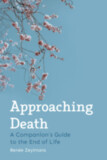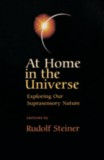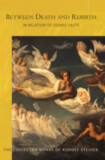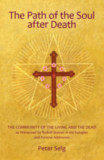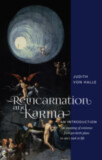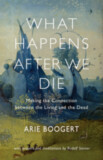The Mystery of Death
The Nature and Significance of Central Europe and the European Folk-Spirits (CW 159)
- Publisher
Rudolf Steiner Press - Published
26th September 2023 - ISBN 9781855846081
- Language English
- Pages 388 pp.
- Size 6" x 9.25"
15 lectures, various cities, January 31 – June 19, 1915 (CW 159)
“Life will have been worthless for us if we have lived for several decades and continue at a later time to judge something that we have experienced in the same way that we evaluated it when we were younger. If we spend our life in such a way, we are very far removed from wisdom. Karma may have brought it about that we became angry when we were young and condemned this or that quality in other people. If we hold fast to this, we will have made poor use of our life.” — Rudolf Steiner (Jan. 31, 1915)
Speaking during the early stages of World War I—with the Western Front just miles away and thousands of young men dying—Rudolf Steiner focuses on the subject of death. In particular, he addresses the difficult question of why some people die prematurely, especially in youth. He also speaks about the deaths of three acquaintances, having made contact with their living souls in the afterlife, voicing their own words and describing the first stages of their journeys after death.
Steiner strikes a second chord with his description of the task of Central Europe in the context of the various “folk souls.” The influences of these spiritual entities are reflected in the culture and life of various peoples but do not promote nationalism. Indeed, nationalism cannot be transcended until we understand and recognize our differences. This approach is based on phenomenology rather than on value judgements.
The third main theme that runs through these lectures has to do with understanding the active impulses and connections in history. Reaching beyond simple notions of “fate,” can we allow for the activities of the Christ impulse?
These extraordinary lectures previously unpublished in English—are presented here with an introduction, notes, and index.
This volume is a translation from German of Das Geheimnis des Todes. Wesen und Bedeutung Mitteleuropas und die europäischen Volksgeister (GA 159).
C O N T E N T S:
Introduction by Urs Dietler
1. The Four Platonic Virtues and Their Connection with the Mystery of Man’s Being
2. The Passing of a Human Being through the Gate of Death—a Transformation of Life
3. Spiritual Science and the Riddles of Death—Deeper Connections of European History
4. The Intimate Element of Central-European Culture and Its Aspirations
5. The Entry of the Christ Impulse into Historical Events
6. Moral Impulses and Their Results—the Cultural Impulse of Eurythmy
7. Cosmic Influences upon the Members of Man’s Being—the Significance of Sacrificial Death
8. The War, a Pathological Process—the Dead as the Helpers of Human Progress
9. Man’s Relationship to the Kingdoms of Nature and to the Hierarchies
10. Ahrimanic Inspiration and Spiritual Impulses—the Symbol of the Rose Cross
11. Christ in Relation to Lucifer and Ahriman—the Threefold Nature of this Form
12. Spiritual Science as a Conviction—the Etheric Body as a Reflection of the Universe
13. Community above Us—Christ within Us
14. Man’s experiences after Passing through the Gate of Death
15. Overcoming Death through Cognitive Insight
Rudolf Steiner’s Works
Significant Events in the Life of Rudolf Steiner
Index
Rudolf Steiner
Rudolf Steiner (b. Rudolf Joseph Lorenz Steiner, 1861–1925) was born in the small village of Kraljevec, Austro-Hungarian Empire (now in Croatia), where he grew up. As a young man, he lived in Weimar and Berlin, where he became a well-published scientific, literary, and philosophical scholar, known especially for his work with Goethe’s scientific writings. At the beginning of the twentieth century, he began to develop his early philosophical principles into an approach to systematic research into psychological and spiritual phenomena. Formally beginning his spiritual teaching career under the auspices of the Theosophical Society, Steiner came to use the term Anthroposophy (and spiritual science) for his philosophy, spiritual research, and findings. The influence of Steiner’s multifaceted genius has led to innovative and holistic approaches in medicine, various therapies, philosophy, religious renewal, Waldorf education, education for special needs, threefold economics, biodynamic agriculture, Goethean science, architecture, and the arts of drama, speech, and eurythmy. In 1924, Rudolf Steiner founded the General Anthroposophical Society, which today has branches throughout the world. He died in Dornach, Switzerland.



